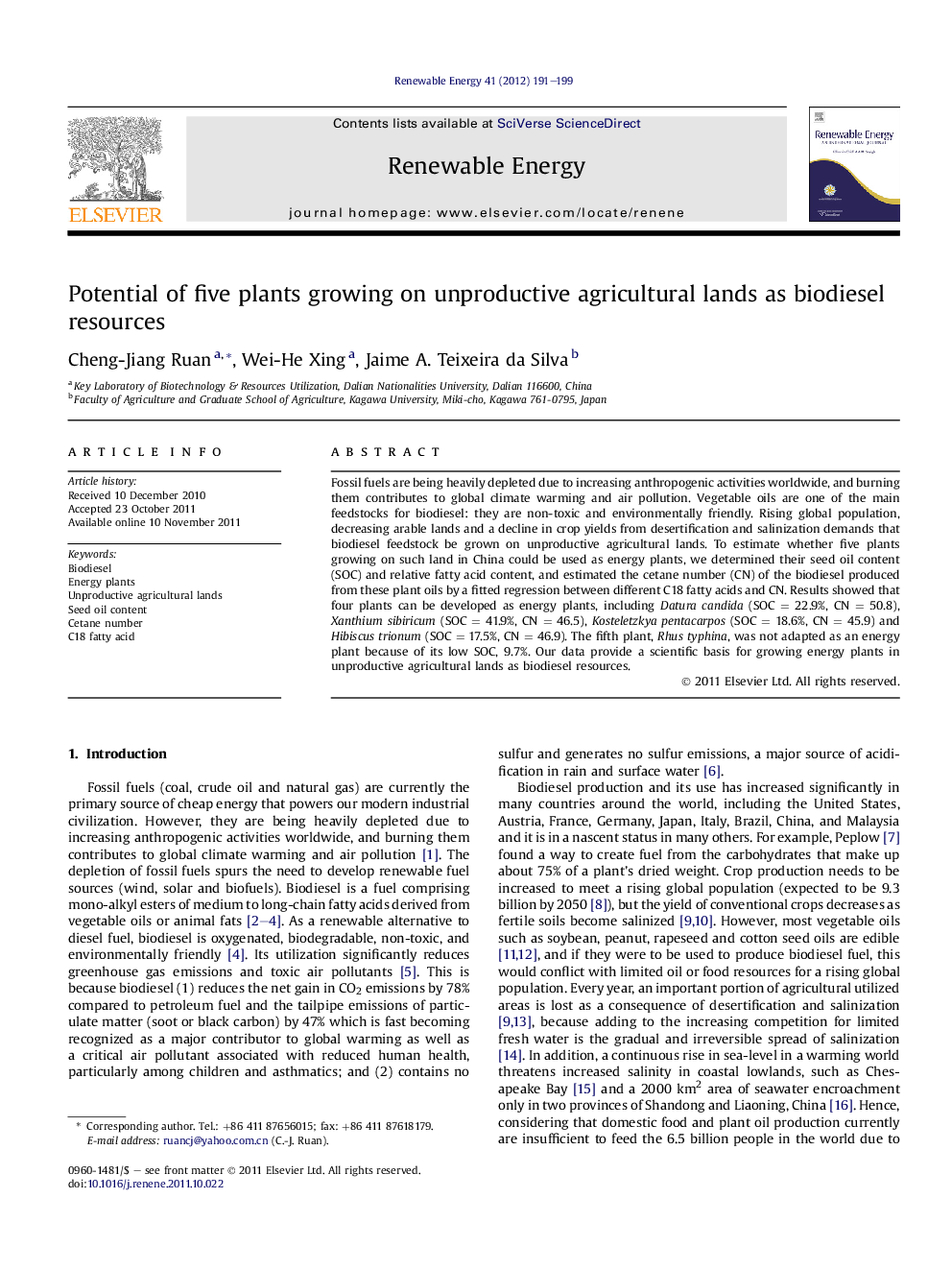| Article ID | Journal | Published Year | Pages | File Type |
|---|---|---|---|---|
| 301112 | Renewable Energy | 2012 | 9 Pages |
Fossil fuels are being heavily depleted due to increasing anthropogenic activities worldwide, and burning them contributes to global climate warming and air pollution. Vegetable oils are one of the main feedstocks for biodiesel: they are non-toxic and environmentally friendly. Rising global population, decreasing arable lands and a decline in crop yields from desertification and salinization demands that biodiesel feedstock be grown on unproductive agricultural lands. To estimate whether five plants growing on such land in China could be used as energy plants, we determined their seed oil content (SOC) and relative fatty acid content, and estimated the cetane number (CN) of the biodiesel produced from these plant oils by a fitted regression between different C18 fatty acids and CN. Results showed that four plants can be developed as energy plants, including Datura candida (SOC = 22.9%, CN = 50.8), Xanthium sibiricum (SOC = 41.9%, CN = 46.5), Kosteletzkya pentacarpos (SOC = 18.6%, CN = 45.9) and Hibiscus trionum (SOC = 17.5%, CN = 46.9). The fifth plant, Rhus typhina, was not adapted as an energy plant because of its low SOC, 9.7%. Our data provide a scientific basis for growing energy plants in unproductive agricultural lands as biodiesel resources.
► Vegetable oils are one of the main feedstocks for biodiesel. ► Biodiesel feedstock could be grown on unproductive agricultural lands. ► A fitted regression between different C18 fatty acids and the cetane number. ► Four plants can be developed as energy plants as biodiesel resources.
